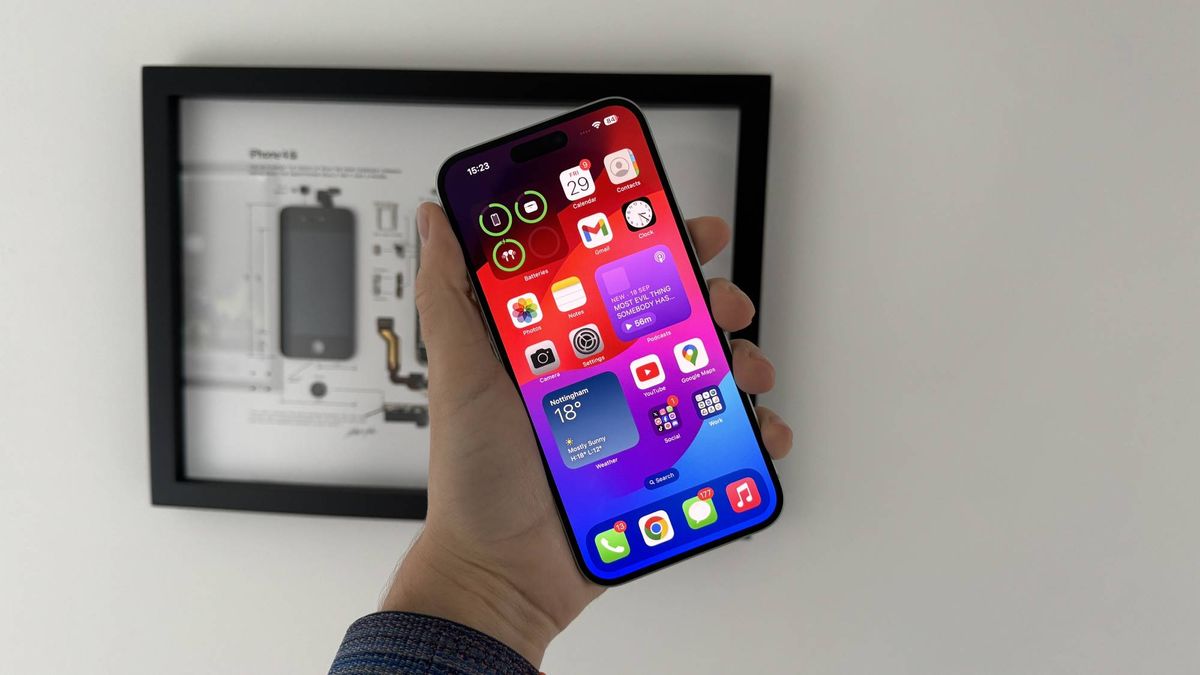

PHOTO:
Anemone123
Few things in life turn out to truly be a watershed moment. However, COVID-19 has clearly been such a moment for the way we work. So what will work look like going forward? And what steps do technology leaders need to take to enable the workplaces of the future that organizations are starting to demand?
How Have Organizations’ Vision of Work Changed?
The last 18 months have shown what organizations — and the employees within — can do when needed. It has also called into question long-accepted norms in the workplace. “The impact of needing to work from anywhere has definitely changed attitudes. This, when coupled with the issue of finding good staff, has caused a new perspective on who actually needs to go into an office,” said CIO Martin Davis. Former CIO Wayne Sadin added, “I’m not sure workplace visions have changed as much as the reality of what organizations have faced in the pandemic, and then Delta. Without question, reality is changing faster than most business plans can adjust.”
Everything starts with caring for the team. CIO Sharon Pitt said her team has “embraced values of compassion and flexibility. And we’ve sought to operationalize this with policies and tools.” She said what her organization still needs what Sadin described as a, “broader organizational strategy/vision that doesn’t undermine the organizational mission. We need to define next-step elements associated with a vision of the fabulous remote workspace, which we have begun to build. It includes effective collaboration, professional development and growth, supervisor training for managing in a remote environment … and more.”
“We have proven work from anywhere works. We can now hire talent from anywhere and that an office isn’t required. Meetings should have always been purpose driven, but COVID forced everyone to think about this,” said CIO Deb Gildersleeve. Former CIO Joanna Young added, “the strategic importance of skilled and engaged talent has increased. The fact is that alignment between engaged employees drives customer delight/effective growth is clearer and clearer. Google just announced flexibility and choice regarding work location. Important to know what big organizations are doing it, but ultimately each organization needs to determine what is best for them. And one more thing, it is critical to ask employees what they want in the future of work.”
How Has Recruiting Changed Because of COVID-19?
Former CIO Tim McBreen said everyone should start “by hiring people with a hybrid mindset.” Having the right leaders with the right values matters. This means that CIOs and other business leaders, according to Young, need to realize, “location has diminished in importance and skills and engagement have gained in importance. We must remember the jobs that will remain in-person only are hospitals, restaurants, retail, most teaching, and transportation. Meanwhile, place-based and anywhere-based employees need tools so they can work together effectively.” Meanwhile, Gildersleeve said, “we need to focus on hiring for potential. It’s no longer about if someone has done the job before or if they can drive to the office, but if they have skills to grow into the job and bring other assets to the table.”
Davis identified a positive outcome for hiring coming out of the pandemic: “The willingness to accept remote workers has enabled many companies to turn a potential problem into an advantage allowing them to hire the best talent from anywhere and remove geographic restrictions.” CIO Justin Bauer agreed, saying, “recruiting has been enhanced [in our organization] since we no longer have to limit ourselves to the geographic area of our corporate office.” Meanwhile, Pitt reminded all that this moment, “is not just recruiting, it’s retention … and it boils down to allowing remote work where possible and continuing to do our best to make our team members feel a part of a great big supportive and inclusive family.”
Related Article: How CIOs Build Effective Teams
Where Should Organizations Be Investing?
CIOs take a long view with respect to investment. As a start, CIO Cathleen Curley said organizations need to be “investing in people and helping them to thrive. This, by necessity, includes mental fitness and well-being; flexible work; and the technology to enable it all. It also includes new approaches to professional development that address the whole person.”
Managers are key to making people, process and technology work, making management training a necessity. As Gildersleeve said, “When thinking about investments, it’s important to train managers so they know how to manage hybrid teams, hybrid meetings, etc. as well as making sure they have the best technology for a good hybrid work experience.”
Gildersleeve wasn’t alone in identifying this need. Pitt said her organization has “developed policies and practices that support remote work. We’ve invested in and adopted tech that does the same. What we still needed is professional development for leaders who work in this new environment and organizational leaders that broadly support and embrace it.”
Technology investments also came up. “We are investing in portability and more flexible office arrangements. Telephony seems to be the biggest gap in delivering this. Teams is great for collaboration between employees — and even vendors — but customer interactions are more difficult to ensure quality in a remote situation,” said Bauer.
Many elements of technology are not ready for prime time. For this reason, Young suggested there needs to be an “increased focus on effectiveness of collaboration processes and tools.” Sadin added to this sentiment, stating, “we no longer have a central data center or security perimeter around our firm. Work from home has helped C-Suite executives accept this reality and implement modern cybersecurity.”
Eliminating Human Band-Aids in the Tech Stack
A year ago, I interviewed several HR leaders about their systems. I was surprised to hear that they depend on what they called “human band-aids” to keep HR functioning. This kind of approach clearly doesn’t work with hybrid or remote work. Gildersleeve said, “Organizations have to invest in technology and tools that work the way people do. Leaders need to look at where they can automate either with APIs or low-code tools that help employees quickly pivot to new ways of working.”
Technology will only get you so far. Without strong and updated processes to support this new way of working, organizations will never benefit from the full impact of the tech stack. Davis put this well: “Start with good process design, supported by technology.” Sadin suggested now is a good time for digital optimization — doing what you already do better, faster and cheaper. “Work from home has forced firms to replace ‘swivel-chair interfaces’ with often hastily constructed RPA, workflow and low code interfaces.” Bauer said his organization “has invested in a number of initiatives, including automating our AP department. With multiple locations and many people working from home or hybrid, ensuring we digitize and automate our processes will allow us to become more efficient.”
Related Article: You Rolled Out Your Digital Workplace in Record Time. Now Let’s Talk Governance
Has COVID-19 Changed the Social Contract?
One of the most well-known lines from Jean Jacques Rousseau’s 1762 book, “The Social Contract” is: “Man is born free, and everywhere he is in chains.” For many organizations, this is how employees effectively operated pre-COVID-19.
“The social contract has absolutely changed. It’s no longer about if someone can drive to the office or live in a certain geographical area so we can see what they are doing. It’s more about how we as leaders foster a culture where employees are trusted to work from anywhere and even more so, feel empowered to drive innovation and make tangible impacts on the business from anywhere,” said Gildersleeve.
The pandemic, combined with the political and societal upheaval of the last year, has had a profound impact on our workplaces. As Pitt said, this is a time to be “serious about, and investing in, diversity, equity, inclusion and belonging. It is, also, a time to embrace those in a remote work environment that requires greater intentionality, practice and professional development among all in the workplace. This means asking how are we hiring? Who are we promoting and why? How do we ensure that all voices continue to be heard?”
“I still see more virtue signaling than actual results on this one — so much progress is still needed,” said Young. Sadin agreed, noting, “IT has always been relatively forgiving about work hours and locations, but for the rest of the firm this is proving a bigger adjustment.” In this process Bauer, said it is critical to ensure “people are comfortable with the measures, and we are taking steps to keep everyone safe. Everyone should have input. Everyone should be listened to.”
CIOs Understand the Need for a New Way of Work
A July 2020 Harvard Business Review article by Sharon K. Parker, Caroline Knight and Anita Keller captured an ongoing dynamic in the workplace: “COVID-19 has thrust many leaders into remote management which requires a different skill set than face-to-face management. They have been forced to make this transition quickly, and for the most part, without training.” CIOs are on the front line of this change and understanding the basis for a new social contract. It may be time for more CEOs to book time with their CIO to cross the chasm new work approaches present.
Myles Suer, according to LeadTail, is the No. 1 leading influencer of CIOs. Myles is director of solutions marketing at Alation and he’s also the facilitator for the #CIOChat.





